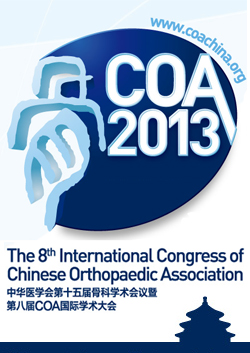
COA 2013: TKA: comparing computer navigation, patient specific and conventional instrument

COA 2013: TKA: comparing computer navigation, patient specific and conventional instrument
A randomized controlled trial comparing patient specific instrument with conventional instrument and computer navigation in total knee arthroplasty
Did you know you're eligible to earn 0.5 CME credits for reading this report? Click Here
CONFERENCE ACE REPORTS
This ACE Report is a summary of a conference presentation or abstract. The information provided has limited the ability to provide an accurate assessment of the risk of bias or the overall quality. Please interpret the results with caution as trials may be in progress and select results may have been presented.
Synopsis
78 osteoarthritic and rheumatoid arthritis patients undergoing total knee arthroplasty were randomized to comparatively evaluate the efficacy of conventional instruments (CON), computer navigation (NAV), and patient specific instrument (PSI). The evidence presented in this study indicated that PSI resulted in comparable tourniquet and operation times to those associated with CON. Lower limb alignm...
To view the full content, login to your account,
or start your 30-day FREE Trial today.
FREE TRIAL
LOGIN
Forgot Password?
Explore some of our unlocked ACE Reports below!

Learn about our AI Driven
High Impact Search Feature
Our AI driven High Impact metric calculates the impact an article will have by considering both the publishing journal and the content of the article itself. Built using the latest advances in natural language processing, OE High Impact predicts an article’s future number of citations better than impact factor alone.
Continue



 LOGIN
LOGIN

Join the Conversation
Please Login or Join to leave comments.